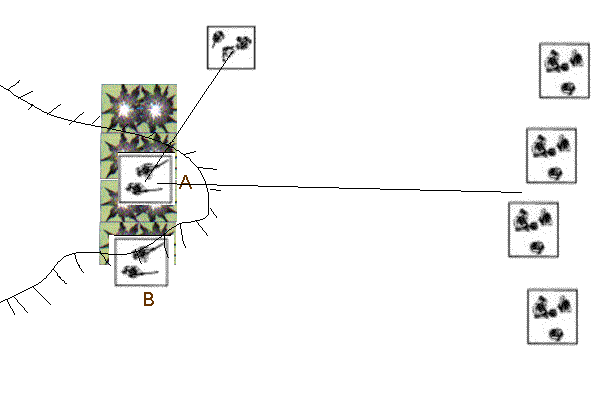Battlefront WWII
On-board Battery Fire
On-board Battery Fire
The examples up to this point have all shown a single firing unit conducting a Shelling attack. To be really effective, artillery and mortars were grouped in larger organizations (batteries and battalions) that can fire as a group. Grouping artillery in this way allows several units to:
- Be called with a single call-for-fire roll
- Use different missions that can increase their effectiveness.
A Shelling Mission by on-board Battery

A trained Russian mortar battery consists of 4 x 82mm mortars (card RU-27) and a forward observer in good order in Organic Support. All 4 of the mortars can fire as a battery with a single call-for-fire roll.
Note that if they could see their targets, each mortar could choose a separate target and fire individually. However, if they cannot see their targets, each separate fire mission would require a separate observer, and Russians have very few units capable of calling for fire. Firing by battery is generally the best way for the Russians to use their entire battery. As they are on-board, the templates must be aligned perpendicular to the direction of fire, measured to the center of the battery. For Russian units in organic support, a call-for-fire die roll of 3 or more is needed for the mission to arrive. This is modified by the discipline modifier of the observer, who in this case is the forward observer/battery commander. Although the fire mission must be placed on a legitimate target (unit A), once the mission is successfully called, targets that have an aiming point under the beaten zone (such as Unit B) are attacked even if they are not seen by the observer. Note that that random shelling die roll modifier is NOT used against B in this situation because the primary target is under observation (spotted or suspected) by the observer. Against infantry units in the open, the basic weapon value of the Russian 82mm mortar is a 0. Because the mortar units are on-board, this is modified by their discipline rating (also 0). A separate fire combat resolution roll would be made against each of the two targets under the template (A and B) using the basic 0 value.